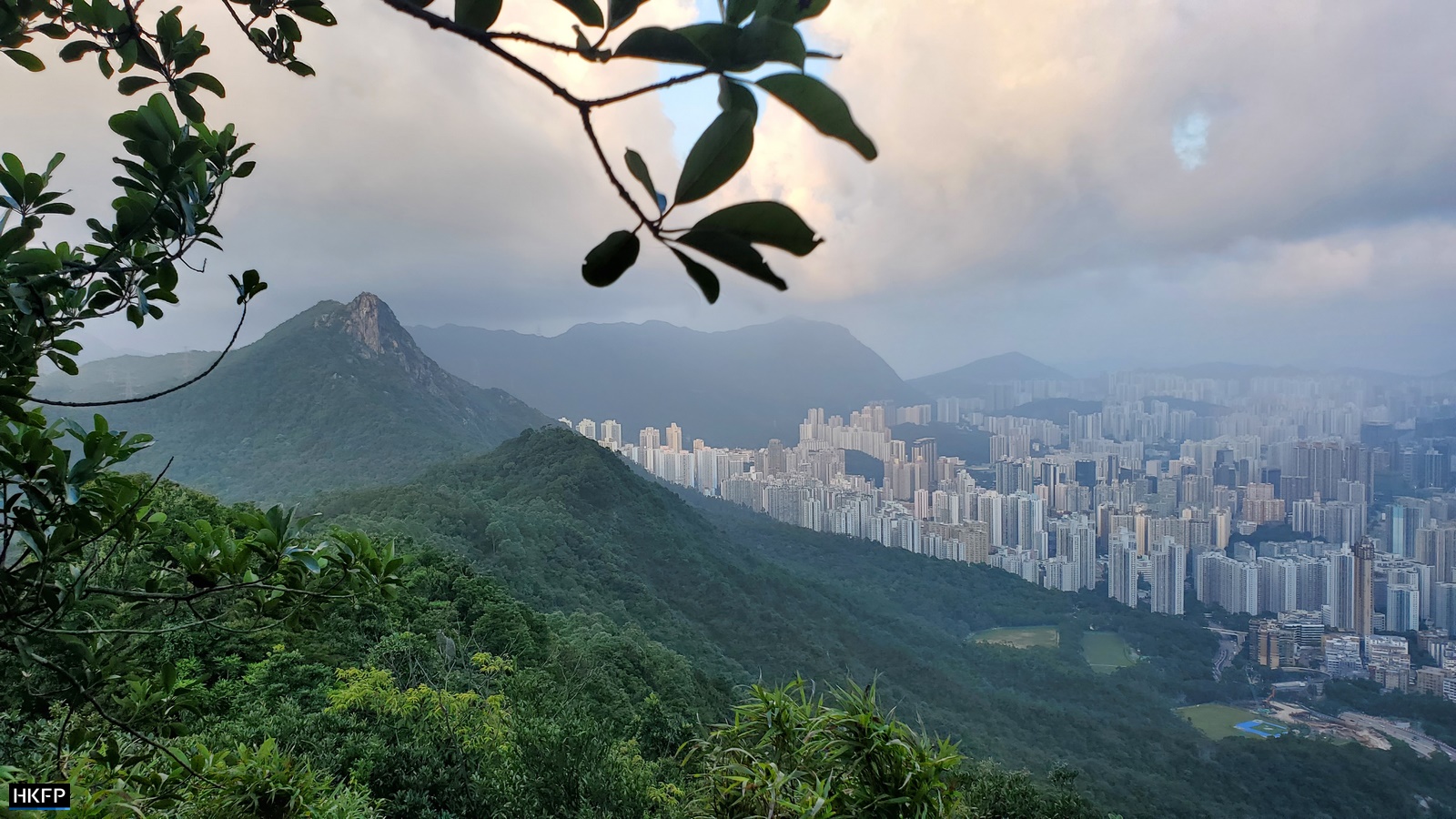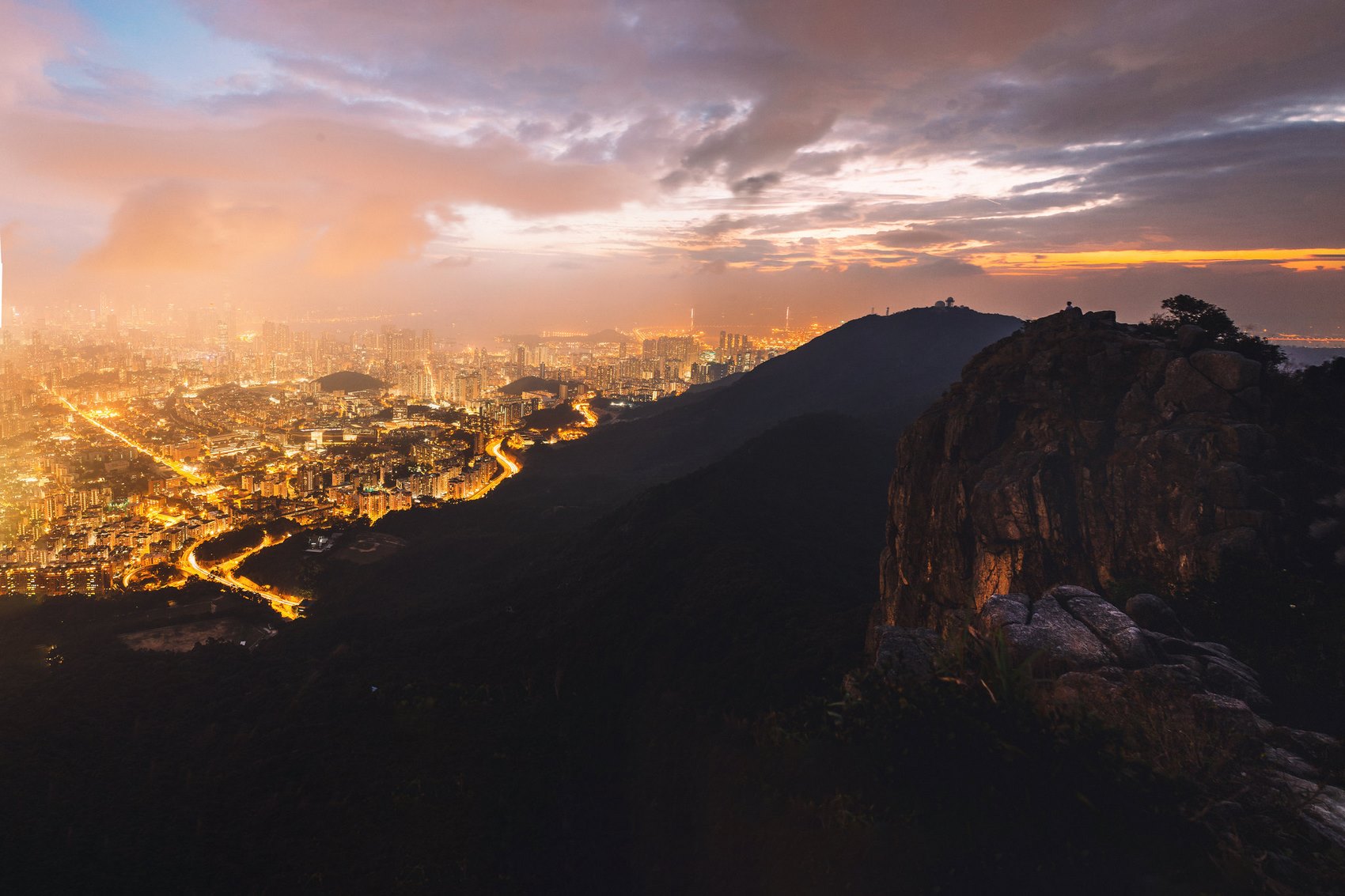Standing at 495m, Lion Rock is Hong Kong’s most iconic peak, a symbol of grit and resilience. It’s also one of the city’s most popular hikes. The natural boundary between Kowloon and the New Territories it puts on a show of everything that Hong Kong’s got to offer — the city, mountains and the sea.

Though the hike is relatively short only spanning around 6 km, it’s steep and can take up to three hours to complete. Make sure to bring plenty of water since most of the trail is uncovered, and be wary that the final stretch involves a rocky scramble which some may find daunting.
How to get to Lion Rock
There are several routes up Lion Rock, but the most popular one begins at Wong Tai Sin MTR station. The initial walk from the station to the start of the hike at Fat Jong Temple is steep and uncovered. You may want to preserve your energy and take a taxi or minibus 18M up to Shatin Pass Estate.

Once you reach Fat Jong Temple continue up Shatin Pass Road. The serpentine road will twist and turn as it rises above the city, slowly revealing sweeping views of Kowloon. In around half an hour you’ll reach the entrance to Lion Rock Country Park.

Here begins the hardest part of the trail — hundreds of steps that could rival the Twins. But all pain is temporary and soon you’ll be rewarded with views that can make you forget about the calf cramps, the humidity and the current state of the world.

Hiking Lion Rock
After the stairs you’ll reach the shaded and flat part of the trail. Keep an eye out for monkeys overhead and enjoy this brief moment of respite before the final 500m climb begins.

The last 500 meters consist of steep stairs that take you up the lion’s back. This part will really put your Lion Rock spirit to the test. Once you reach the top there are several smaller peaks along the ridge, which separates Kowloon from the New Territories with endless city views to one side and rolling mountains to the other.

This part of the hike is also the best spot to take photos of the iconic lion’s bust, because the closer you get the less lion-like it looks. Then make your way to the lion’s head and soak in the views.

The mountain was the backdrop of iconic local television series Below the Lion Rock produced by public broadcaster RTHK. The show depicted the lives of Hongkongers in the 1960s and 1970s, when many lived in resettlement areas and public housing estates while putting their noses to the grindstone to make a living.

Lion Rock has also been a popular destination for the city’s pro-democracy activists to make political statements. Bright yellow banners reading “I want genuine universal suffrage” and “No extradition to China” have been unfurled from the hilltop.
Thousands of Hongkongers formed human chains at two of the city’s iconic hilltops on Friday evening in a show of solidarity with pro-democracy protesters. #HongKong #China #antiELAB #hongkongprotests VId: Alex Chau.
— Hong Kong Free Press HKFP (@hkfp) September 13, 2019
Full story: https://t.co/7d83MEWdLe pic.twitter.com/SZQmizG0Ek
Thousands of Hongkongers formed a human chain and shone mobile phone lights and lasers from the mountain to show solidarity with the protesters during the 2019 demonstrations and unrest.

You can either head down the same way you came up or take the path labelled Shatin Pass Road to the right of the lion’s head. You could also come up this way if you were in a rush but it’s a difficult ascent with lessers views. The way down to Lok Fu MTR station should take about 40 minutes.

Lion Rock, with its proximity to the city and well marked trails, can also be hiked during night time. Bring a torch and head to the top by sunset to see the city wind down and the lights come up. It’s a good idea, however, to hike Lion Rock during the day first before attempting it at night.

Be sure to check out World War Two remnants on the way down. Allied troops sought to defend Hong Kong across the Gin Drinkers Line, and gun turrets, fortifications and stones displaying directions can still be spotted in the undergrowth.
Amah rock & alternative route
There’s plenty more great hikes in Lion Rock Country Park, including Amah Rock. Yet another rock formation named for what it looks like, in this case a woman carrying a baby. You can visit Lion Rock and Amah Rock in one go by starting the hike in Sha Tin instead of Wong Tai Sin.

The combined hike begins from Hung Mui Kuk Barbecue Area, which you can reach by taking the MTR to Tai Wai station, taking Exit C and following Hung Mui Kuk road until you reach the barbecue area. Or take bus 81c to Worldwide Gardens.
There are two paths up from here, but both eventually connect to Wilson Trail Section 5 which you’ll cross to reach the Amah rock trail.

Once you get to the concrete path along the catch water drain cross the small bridge and go up the steps until you reach a fork in the road. Keep right for the way up to Amah rock where you’ll be treated to beautiful views of Sha Tin, the backyard of Kowloon.

On the way down you’ll quickly find yourself at an intersection where you can choose to continue on to Lion Rock. Just the Amah rock hike will take around an hour and a half. The Lion Rock detour will add another 45 minutes, but it’s worth knocking out two giants in one day.
Support HKFP | Policies & Ethics | Error/typo? | Contact Us | Newsletter | Transparency & Annual Report | Apps
Help safeguard press freedom & keep HKFP free for all readers by supporting our team

LATEST FROM HKFP
HKFP has an impartial stance, transparent funding, and balanced coverage guided by an Ethics Code and Corrections Policy.
Support press freedom & help us surpass 1,000 monthly Patrons: 100% independent, governed by an ethics code & not-for-profit.










